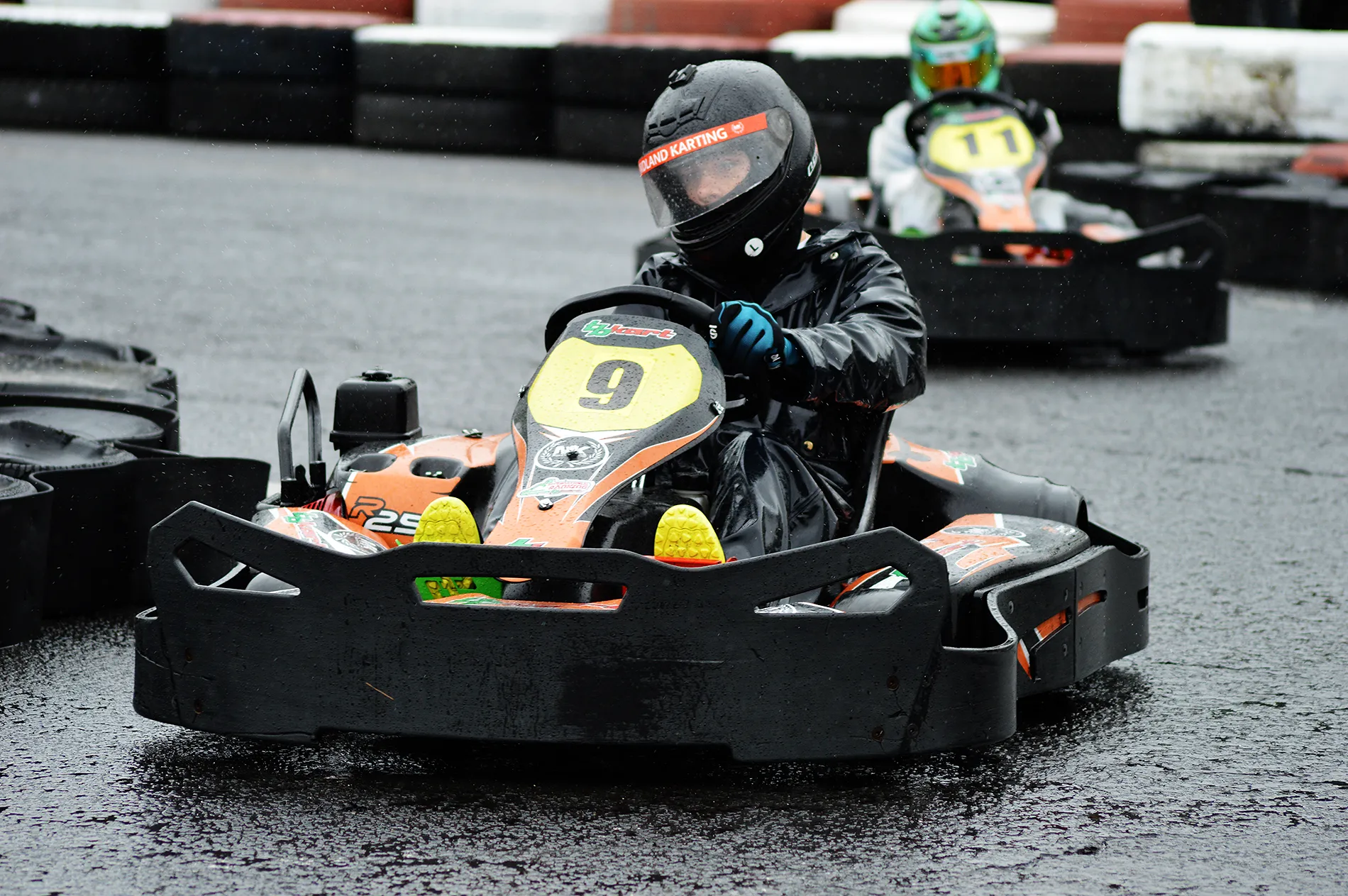
When it comes to karting, speed and skill aren’t the only things that matter, safety is key. Nothing is more essential to your safety gear than your helmet. A properly fitted racing helmet doesn’t just protect your head in a crash; it improves focus, reduces fatigue, and enhances confidence on the track. But how do you know if your helmet fits the way it should? Let’s break it down.
Before you even try a helmet on, you need to know your head size. Use a soft measuring tape to measure the circumference of your head about an inch above your eyebrows, keeping it level around your skull. This measurement in centimetres will guide you to the right helmet size according to the manufacturer’s chart. Keep in mind that sizing can vary slightly between brands, so always refer to the specific brand’s sizing guide.
When you put the helmet on, it should feel snug but not painful. It might even feel a bit tight at first—especially if it’s brand new, but that’s normal. Racing helmets are designed to fit securely without any pressure points. Here’s what to check:
Cheek Pads: These should press firmly against your cheeks, almost like puffing them up. You shouldn’t be able to slide your fingers between your cheeks and the padding.
Crown Fit: The helmet should hug the top and sides of your head evenly, with no gaps or loose spots.
Movement Check: Grab the helmet and try to move it side to side and up and down. Your skin should move with it. If the helmet moves independently of your head, it’s too big.
Vision and Comfort: Your vision should be clear, and the helmet should sit level and not tilted back or forward. You should feel evenly compressed all around without any pinching.
Always fasten the chin strap snugly and ensure the helmet stays firmly in place when tugged. You should only be able to fit one or two fingers between the strap and your jaw. If the helmet lifts off when you try pulling it up from the back, it’s not the right fit.
Before committing, wear the helmet for about 5–10 minutes. This will help you notice any discomfort or pressure points that weren’t obvious right away. If anything starts to ache, try a different size or model.
For karting, make sure your helmet is certified for motorsports use—look for certifications like Snell (e.g., SA2020), FIA, or CMR (for younger drivers). Regular motorcycle helmets (DOT or ECE certified) might not be sufficient or allowed at your track.
Your helmet is your most important piece of karting gear. Take the time to get the fit right, and don’t settle for “close enough.” A correctly fitted helmet means better safety, more comfort, and improved performance every time you hit the track. So it’s super important to measure up, try on, and drive hard—knowing your head’s going to be well looked after.
Take your go karting journey to the next level. Book a visit to Midland Karting in Lichfield and enjoy the ultimate outdoor go karting experience.
sales@midlandkarting.co.uk
Call us on 01543 418419
Text to enquire on 07380 849093
Midland Karting is a trading name of Midland Karting Limited, a company registered in England and Wales, number 04156894.
Various trademarks are owned by their respective owners.
Lichfield web design, cloud hosting and maintenance by Fellowship Studios.